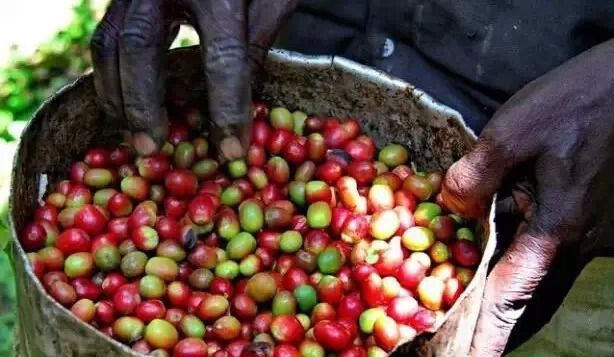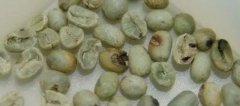Birthplace of Coffee | know the raw beans of Ethiopia

For professional baristas, please follow the coffee workshop (Wechat official account cafe_style)
Ethiopia is the birthplace of Arabica coffee.
According to research, wild Arabica grows in the forests of the Kaffa region of Ethiopia. Ethiopians have been drinking coffee longer than anyone else. Coffee is an essential drink in daily life, and about 50% of the output is for domestic demand.
Now located in the forests in the south and southwest of Ethiopia, there are still wild coffee trees with a large number of varieties, which is a valuable database for breeders.
About 25 per cent of the population (about 15 million) is related to coffee production, of which 90 per cent of coffee beans are produced by small farmers, accounting for more than half of Ethiopia's GDP. Coffee is widely grown in southwestern, southern and eastern Ethiopia. The most famous is Harrar in the east and Sidamo in the south.
* Harrar is sun-treated coffee with a touch of red wine.
* Sidamo in the south is famous for its washing treatment. Sidamo coffee beans have a delicate flavor and have a special floral flavor.
* Yirgacheffe, a village in Sidamo, has amazing perfume, lemon, peach and other flavors. Yirgacheffe is so special because of its local and climatic conditions, which makes the coffee produced by Yirgacheffe so prominent.
Since December 2008, coffee has been incorporated into the crop trading platform-Ethiopia Commodity Exchange (ECX) by the Ethiopian government. Since then, all coffee transactions have to go through the platform set up by the government, which has completely changed the way Ethiopian coffee beans were traded in the past.
In the past, Ethiopian coffee beans were traded through the country's competitive bidding system, which has evolved to allow exporters to trade directly with producers, which is very important for importers and roasters. Because they can know the source of coffee beans, which also connects the consumer side with the production side, so that consumer countries can work with producing countries to produce better and more unique coffee. Consumer countries will also want to help producing countries in order to know who produces it, improve the living standards of producing countries, and make them more aware of environmental conservation, which is also positive for the production and quality of coffee.
The bidding is held in Addis Ababa and Dire Dawa. Before the bidding begins, Coffee Liquoring Unit will evaluate the coffee and grade it, and the buyer will start bidding for the desired bid. In the bidding system, there is a category of businessmen called "mill exporters". They have their own mill (washing treatment plant) and export license. Mill, which plays a central role in the coffee supply chain, Mill relies on local farmers to supply coffee fruit.
Mill exporters's role is as a "producer, processor, exporter", they do not have to sell coffee beans to exporters, because they can export, although this is technically illegal, but loopholes in Ethiopian law allow mill exporters to sell coffee beans to themselves at very low prices to avoid unnecessary taxes, and then sell coffee abroad in the role of exporters to make a difference. Mill exporter can also send coffee beans to the Addis Ababa exchange for domestic sale. Ethiopia is one of the few producers with strong domestic demand for coffee. Mill exporter can get higher prices for domestic sales of coffee and avoid taxes. As far as small farmers are concerned, there is no future exploitation, and they will never get the profit from the high price of mill exporter.
Important Notice :
前街咖啡 FrontStreet Coffee has moved to new addredd:
FrontStreet Coffee Address: 315,Donghua East Road,GuangZhou
Tel:020 38364473
- Prev

[picking beans] picking beans is a very important move.
Communication of professional baristas Please pay attention to the delicacy of a cup of coffee in the coffee workshop (Wechat official account cafe_style). Once mixed with defective beans, it will be greatly reduced, no matter how fresh and expensive the beans are, it will make people uncomfortable and destroy the flavor of the whole pot. On the other hand, most of the coffee that people drink will feel palpitations and discomfort, usually defective beans (such as mold infection, worm-eaten beans)
- Next

Roasting Reaction Change--Coffee Roasting Caramelization
Professional barista communication, please pay attention to coffee workshop (Weixin Official Accounts cafe_style) coffee green beans do not contain the special aroma of coffee, so they are not eaten directly, but must be roasted before producing a large amount of volatile aroma substances. After roasting, the main volatile aroma components of coffee beans were analyzed and confirmed to have at least 660 kinds, which was the most important volatile aroma component in all foods and beverages.
Related
- Beginners will see the "Coffee pull flower" guide!
- What is the difference between ice blog purified milk and ordinary milk coffee?
- Why is the Philippines the largest producer of crops in Liberia?
- For coffee extraction, should the fine powder be retained?
- How does extracted espresso fill pressed powder? How much strength does it take to press the powder?
- How to make jasmine cold extract coffee? Is the jasmine + latte good?
- Will this little toy really make the coffee taste better? How does Lily Drip affect coffee extraction?
- Will the action of slapping the filter cup also affect coffee extraction?
- What's the difference between powder-to-water ratio and powder-to-liquid ratio?
- What is the Ethiopian local species? What does it have to do with Heirloom native species?

